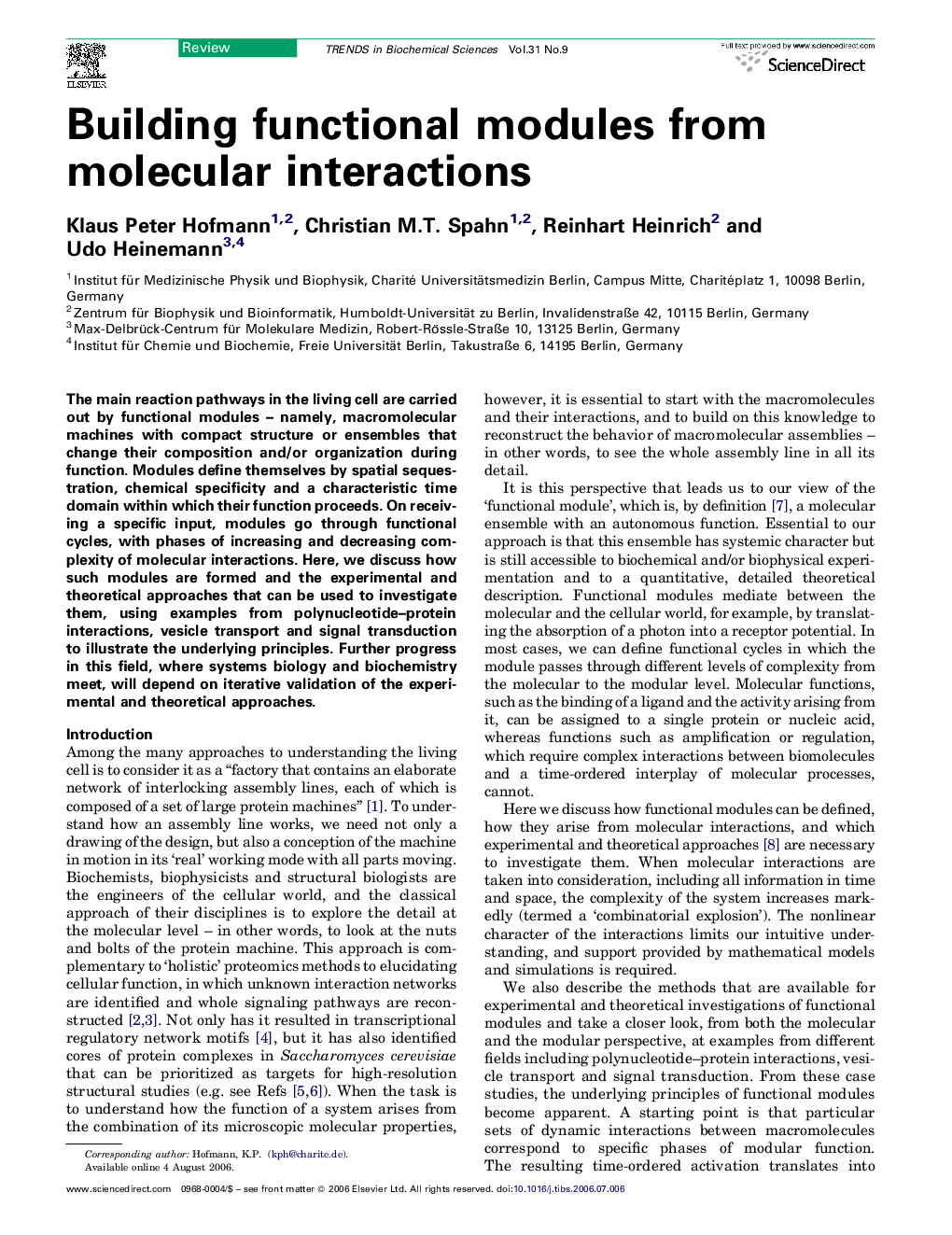| Article ID | Journal | Published Year | Pages | File Type |
|---|---|---|---|---|
| 2031502 | Trends in Biochemical Sciences | 2006 | 12 Pages |
The main reaction pathways in the living cell are carried out by functional modules – namely, macromolecular machines with compact structure or ensembles that change their composition and/or organization during function. Modules define themselves by spatial sequestration, chemical specificity and a characteristic time domain within which their function proceeds. On receiving a specific input, modules go through functional cycles, with phases of increasing and decreasing complexity of molecular interactions. Here, we discuss how such modules are formed and the experimental and theoretical approaches that can be used to investigate them, using examples from polynucleotide–protein interactions, vesicle transport and signal transduction to illustrate the underlying principles. Further progress in this field, where systems biology and biochemistry meet, will depend on iterative validation of the experimental and theoretical approaches.
